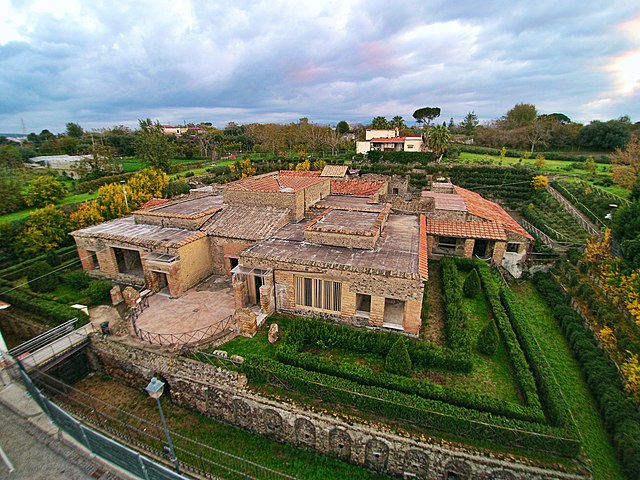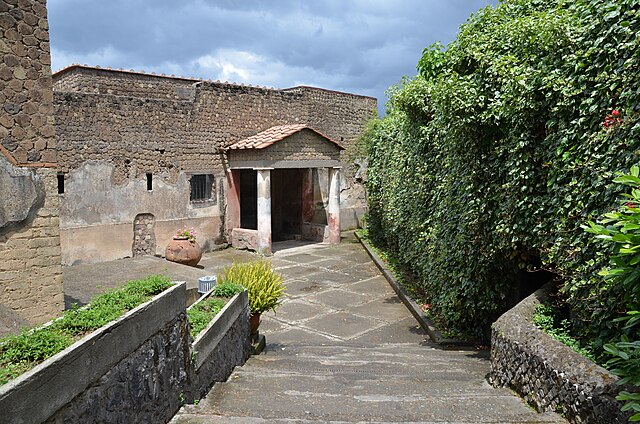Villa rustica was the term used by the ancient Romans to denote a farmhouse or villa set in the countryside and with an agricultural section, which applies to the vast majority of Roman villas. In some cases they were at the centre of a large agricultural estate, sometimes called a latifundium. The adjective rustica was used only to distinguish it from a much rarer sub-urban resort villa, or otium villa built for purely leisure and luxury, and typically located in the Bay of Naples. The villa rustica would thus serve both as a residence of the landowner and his family and also as a farm management centre. It would often comprise separate buildings to accommodate farm labourers and sheds and barns for animals and crops.
Scale model of a Roman villa rustica. Remains of villas of this type have been found in the vicinity of Valjevo, Serbia.
Boscoreale villa
Mosaic floor at Villa dei Volusii
Villa of Torre de Palma
A Roman villa was typically a farmhouse or country house in the territory of the Roman Republic and the Roman Empire, sometimes reaching extravagant proportions.
Villa Poppaea at Oplontis (c. 50 BC)
Villa Regina, Boscoreale
Villa of the Mysteries, Pompeii
Entrance to the Villa San Marco, Stabiae








